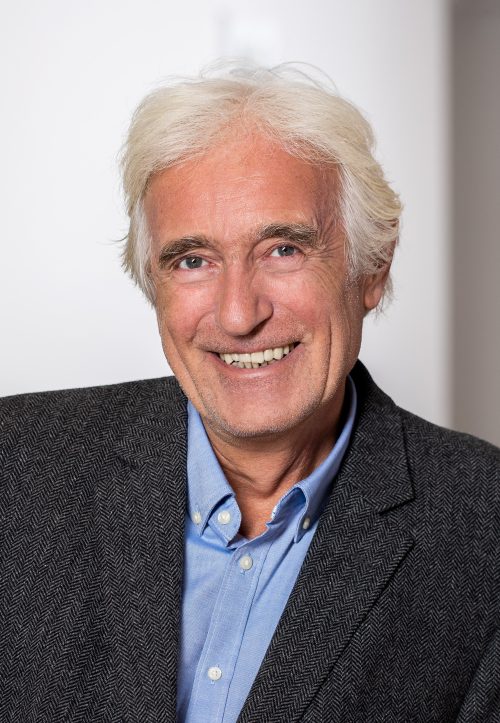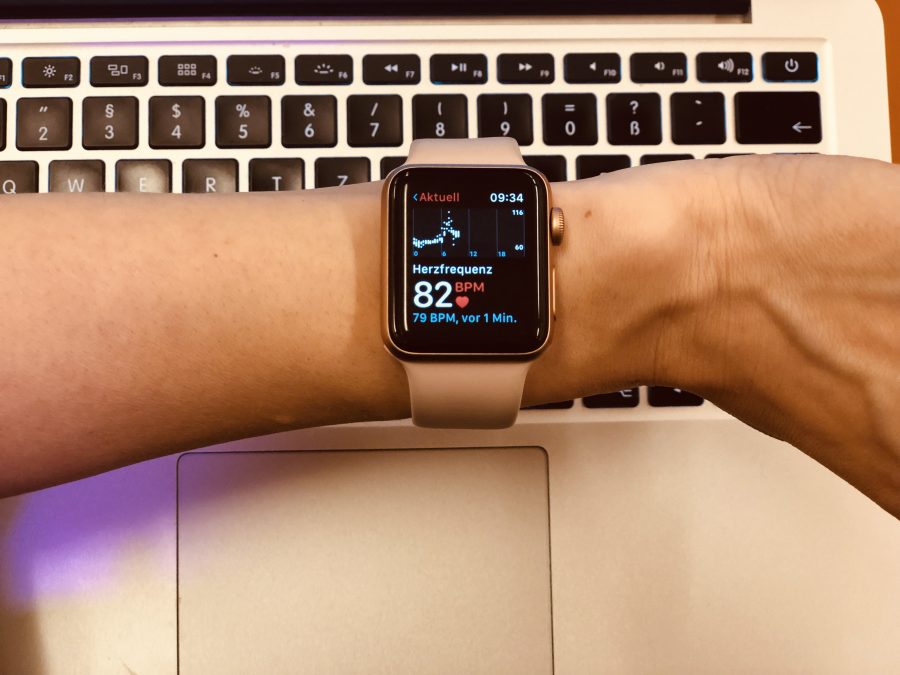Is there an "optimal" heart rate? In other words, is there a connection between the number of our heartbeats and our life expectancy? How can we influence our heart rate? And: is there a connection between our pulse and our emotions, feelings, or our unconscious?
From our pulse, which we can feel on the wrist or on the carotid artery, conclusions have been drawn since ancient times about the function of the cardiovascular system or diseases of the heart and vessels.
The rhythm (whether rhythmic or non-rhythmic), the quality of the pulse (e.g. as celer et altus or parvus et tardus) and the heart rate are assessed.
To this day, the “normal” heart rate is given very broadly between 50 and 100 beats per minute in adulthood.
It is subject to a variety of influences: hormones such as adrenaline or norepinephrine, but also the thyroid hormone thyroxine increase the pulse rate, so-called vagus stimuli reduce the heart rate via the parasympathetic nervous system.
In diseases in which the body’s total basal metabolic rate is elevated, such as fever, the pulse is also faster.
A variety of substances or medications can have a positive or negative effect on the pulse.
During physical exertion, our body needs more energy and oxygen. This additional requirement is covered by an increase in the volume of blood ejected from the heart into the artery per minute. This volume of blood pumped per minute, the so-called cardiac output, results from a larger amount of blood ejected per heartbeat multiplied by a faster number of heartbeats. For example, more frequent heartbeats with more ejected blood can cover the energy requirement even during great exertion.
In order to understand the heart rate, it is also crucial to take into account that the cycle between two heartbeats divides into a filling phase – diastole – and an ejection phase – systole.
The time for systole, during which around 70 mL of blood is pumped with each heartbeat at rest, is relatively constant.
The time of diastole, in which not only the filling of the heart chambers but also the blood flow to the heart muscle itself takes place, is frequency-dependent.
This means that with a lower heart rate, the chambers can be better filled and the heart itself can be supplied with more energy. On the other hand, a higher resting frequency with increased energy requirements results in less time for the energy supply of the heart muscle as well as a decrease in filling.
This leads to the question: is there an “optimal” heart rate?
In other words, is there a connection between the number of our heartbeats and our life expectancy?
How can we influence our heart rate? And: is there a connection between our pulse and our emotions, feelings, or our unconscious?
The first question is supported by long-term scientific observations.
In the Famingham study, it was shown, among other things, after an observation period of more than 30 years, that life expectancy correlates with the earliest documented heart rate.
From a resting frequency of 70 beats per minute, the risk of dying earlier after 3 decades increases.
This applies to all-cause mortality, but especially to death in the context of a heart attack and sudden cardiac death.
High-risk groups are overweight people with metabolic syndrome or poorly controlled hypertensive patients with a resting heart rate of more than 80/min.
For most species, the sum of all heartbeats is constant.
On the one hand, some turtles have a life expectancy of up to 200 years with 5-15 beats per minute, on the other hand, the jumping mouse only lives 7-10 days with over 1000 beats per minute.
In humans, the longest life expectancy can be expected at a heart rate of around 60 rpm, the goal is a resting rate below 70 rpm.
As a lower limit, a pulse below 50 rpm should be avoided – except for healthy, very trained people.
How can our pulse be influenced?
The balance between the sympathetic nervous system with its stress, blood pressure and heart rate-increasing influences on the one hand and the vagus or parasympathetic nervous system with circulatory calming influences on the other hand can be positively influenced by a lifestyle with regular endurance exercise.
Overweight people already have an increased frequency before the full picture of metabolic syndrome appears.
As a preventive measure, reference should be made to the possibility of a conscious lifestyle in order to improve life expectancy with quality of life.
Some conditions are associated with a higher heart rate.
In these cases, the primary treatment of the underlying disease must be carried out.
As drugs that can also lower the frequency, among other things, ß-blockers are primarily used, but also ivabradine and, in individual cases, bradycardizing calcium antagonists.
A connection between emotions or our unconscious and frequency can best be explained by the interacting influences of music.
End of the Baroque, i.e. 17th/18th century , „tactus“ was defined for the first time.
This indicated how quickly a piece of music had to be played.
As a guideline, the human pulse rate was used.
“Adagio” was defined as “slow, expressive” with a frequency of 66 to 76 rpm.
Since then, “Allegro” has been played with 112 to 120 strokes.
When it comes to frequency indications, musicians remember that whole and semitones are counted, i.e. 1, 2 – 1, 2, 3, 4, so that 60 or 120 beats, i.e. whole and half notes, are often interpreted in the same way, especially in today’s popular music.
If we count the tempo of the background music in some radio stations, department stores or shops, we can see that almost all of these pieces of music are played at a frequency around 120 – corresponding to a pulse rate around 60.
The latest neurophysiological studies show that music activates brain regions that are responsible for well-being and feelings of happiness at that speed.
On the other hand, pieces of music with a frequency of around 150 rpm activate stress centers in particular.
During concerts by Verdi, Puccini, Bach and Beethoven, a working group correlated the orchestra’s time changes with blood pressure, heart and respiratory rates as well as blood flow to the skin of the audience.
Even a short-term increase in the tempo of the musicians causes an increase in pulse, blood pressure and respiratory rate in the listeners, and their vessels constrict.
The fact that the composers were well aware of these interactions between tempo and our unconscious nervous system is also shown by Johann Strauss’s allusion when Rosalinde sings in Die Fledermaus: “Voices of my heart beats – with the Tiktak of a clock? “You count the beat of your heart, and I count the Tiktak of your watch.”
Ludwig van Beethoven, for example, also plays impressively with tempo variations at the beginning of the 5th Fateful Symphony.
In today’s music, there are many examples of how the same piece of music in the same key, with the same lyrics but played at different tempos, triggers a wide variety of emotions in the audience.
Some quick examples:
(M 1A) In the interpretation of “Jailhouse Rock” on the occasion of the Elvis gala “Divas in Las Vegas”, the bass holds the basic rhythm for an established audience in evening wear.
(M 1B) In Mötley Crüe’s interpretation of heavy metal, aggressive emotions are also lived out physically.
As a second example, the versions of “What a wonderful world” are mentioned: (M 2A) first Louis Armstrong and (M 2B) in contrast to the English punk veterans Ramones.
And last but not least, 2 interpretations of “You never walk alone” with contrary audience reactions: (M 3A) The version by André Rieu with orchestra in tuxedo, angel choir and violin solo moves a blissful, spellbound auditorium to tears.
(M 3B) On the other hand, the final number of the Toten Hosen in the “Heimspiel-Tourne” 2005 with Bengal fires, pogo and stage diving.
So there is a close interaction between the tactus, the tempo or frequency and our unconscious. In general, our pulse rate increases under acoustic stimulation. The increase in heart rate depends on the resting frequency and is triggered by the sympathetic nervous system. In practice, this means that regardless of the style of music you are listening to, depending on the physical exertion, the pace should be below your heart rate to avoid further climbs.
This is especially true for the choice of music when jogging or other sporting activities.
But do these influences of music also have an impact on our quality of life and life expectancy in the long term?
A recent Canadian survey showed that people who regularly listen to classical music or so-called “popular music”, i.e. music with predominantly frequencies around 60, are 10% healthier and tend to behave more socially.
In patients with cardiovascular diseases, about 30 minutes of music a day at a tempo of 60 can reduce blood pressure by 12 mmHg systolic or 5 mmHg diastolic. At the same time, a decrease in heart rate and an increase in blood flow in terms of better blood circulation can be expected. In rehabilitation after heart attacks or heart surgery, less pain and anxiety were reported under music therapy.
In the patient page of the famous Boston Harvard Medical School, it is summarized: Music therapy or just listening to music can be good for your heart.
The optimal target range of our resting frequency is between 60 and 70 beats per minute.

Univ.- Prof. Dr. Thomas Stefenelli is a specialist in internal medicine, cardiology and angiologyChairman, 1st Medical Dept., Danube Hospital and generally sworn and court-certified expert His main areas of expertise are: myocardial insufficiency, coronary heart disease/angina pectoris, atherosclerosis/vascular diseases, valvular heart diseases.


